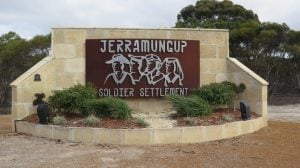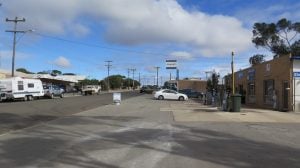27 May 2014
The serene, aqua, and peaceful Two People’s Bay in Two People’s National Park east of Albany
As we had an early start today to travel about 480 kilometres to Esperance, we had a quick motel breakfast, filled the car with fuel, and set off for our long journey. Not many photographs today, too much driving!
Two People’s Bay had been recommended as a lovely bay to visit, it is about 25 kilometres east of Albany, so we wanted to find it. Our usually trusty GPS found the correct turnoff, and although the road started off well it soon deteriorated into a graded road on the 14 kilometres to the bay. However it was well worth the drive as we descended into the most beautiful blue bay with pristine white sand. It was a great start to the day as we headed back to the main highway.
Initially we travelled through plantation forests, mills, vineyards and wineries, then into dense scrub that seemed to continue on a road that we could see for kilometres ahead of us, almost mesmerising in its monotony. There were very few towns that we went through, and almost gave up being able to find a decent coffee shop for our caffeine shot of the day!
The road goes on, and on and on…..
The first large town that we came to was Jerramungup, located in the Great Southern agricultural region. The town of Jerramungup was established in 1953 as a war service settlement area. It was gazetted in 1957, at a time when the Government was active in opening up land in the area for agriculture. The town hall was opened in April 1958 and is know colloquially as the ‘Root Pickers Hall’ as it was paid for by volunteers picking mallee roots. 200 tonnes of Verde Laguna granite from Jerramungup was used to make the Australian War Memorial in London that was opened in 2003. The Jerramungup petrol station/newsagent/general store/cafe was open, a young mother’s get together was happening in the back of the cafe, and a technician was servicing the coffee machine. We were advised that we might have to wait 10 minutes for our coffee, but we would probably have waited longer if necessary – the coffee was very welcome.
The quaint cafe (left) and main street (right) at Jerramungup, 172 kms from Albany and 114 kms to Ravensthorpe – and not much in between
Ravensthorpe was the next town we came to. Ravensthorpe Shire, on the south coast of Western Australia’s Golden Outback, boasts 200 kilometres of amazing coastline and pristine natural bushland covering two thirds of the region. The town of Ravensthorpe is surrounded by ancient rocky ranges, rugged river valleys, vast sand plains, rare animal species and historical mining sites. Ravensthorpe Nickel Operations is a nickel mine and hydrometallurgical processing plant just outside of Ravensthorpe on the road to Esperance. Mining in Ravensthorpe considerably predates the current nickel mine, with gold discoveries dating back to 1898. The town experienced a down turn after the First World War but mining for copper continued up until the 1970s.
Ravensthorpe Shire forms a part of the Fitzgerald Biosphere Recovery Plan . The plan presents a landscape approach to identifying the recovery actions and management practices necessary to ensure the long-term viability of the threatened and priority species and ecological communities and the overall biodiversity of the Fitzgerald Biosphere. The plan is unique and internationally recognised and has been in operation since 1978.
As we travelled further east the landscape changed yet again as we drove through the vast, flat wheat and grain fields that stretched to the horizon, and we saw some massive grain silos. The road trains also became more visible as they carried their loads of fuel, grains and sheep and we encountered a few “wide loads” of trucks carrying huge farm machinery.
Then finally we reached the very pretty seaside town of Esperance on Esperance Bay on the Southern Ocean where we will spend the next two days. We had time to drive along the waterfront where massive works are being undertaken to construct a breakwater, walking path and gardens, should be wonderful when it is completed. At the end of the bay is the port with massive silos where exports include iron ore from the Kalgoorlie region, nickel concentrate from Kambala (south of Kalgoorlie) and grains namely barley, canola, lupins, oats, peas and wheat, all grown in the Esperance agricultural area. Pink granite quarried near Esperance is another export.
The day was drawing to a close, so we returned to the motel to unpack and get comfortable. There is a Chinese restaurant within a short walk from the motel, and it is a BYO, so it just filled the bill for our first night in Esperance…….. and the food was excellent. Mongolian Lamb and Beef Curry with boiled rice – then some decadent desserts!
Tomorrow we will head west, then east to discover some of the beautiful beaches along the wild Southern Ocean.










